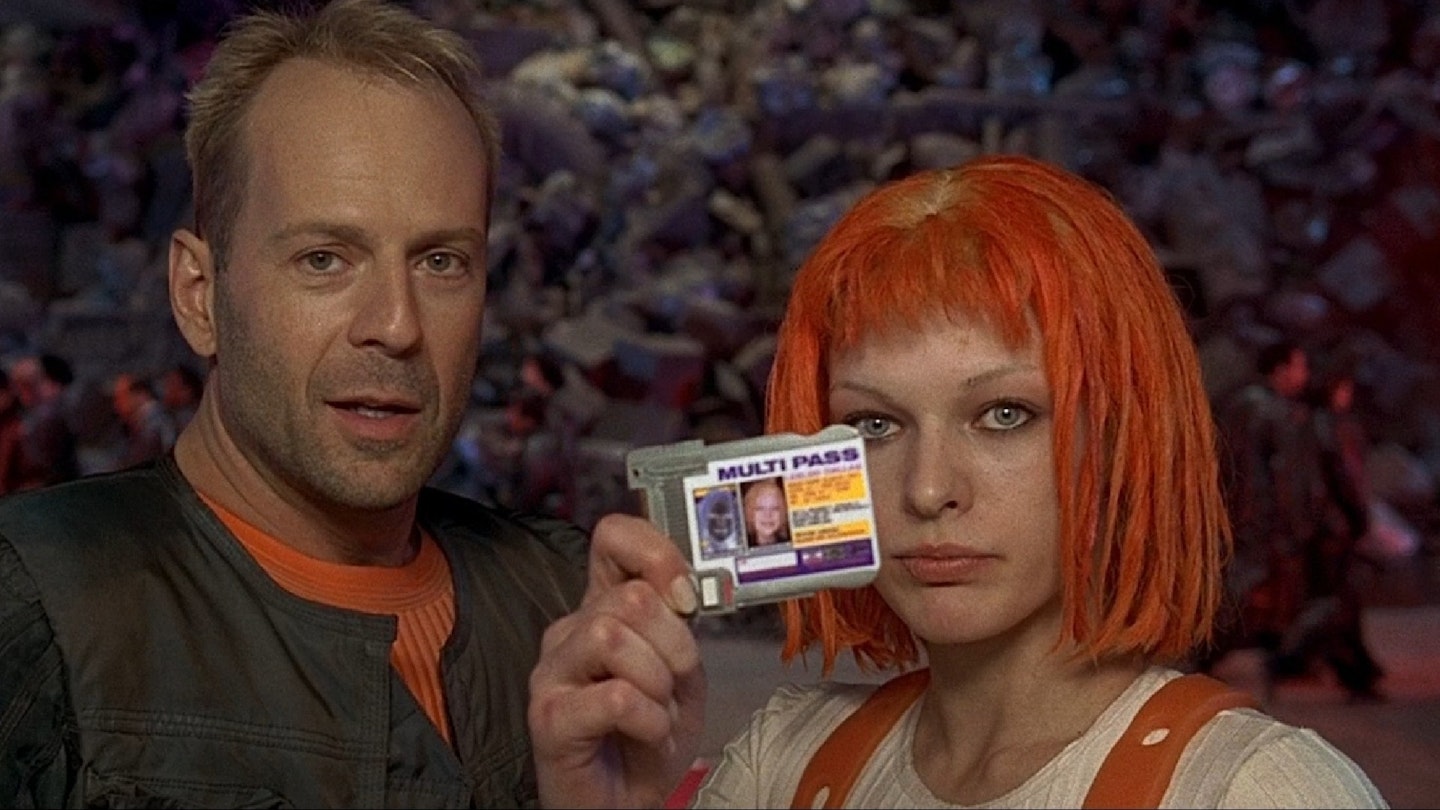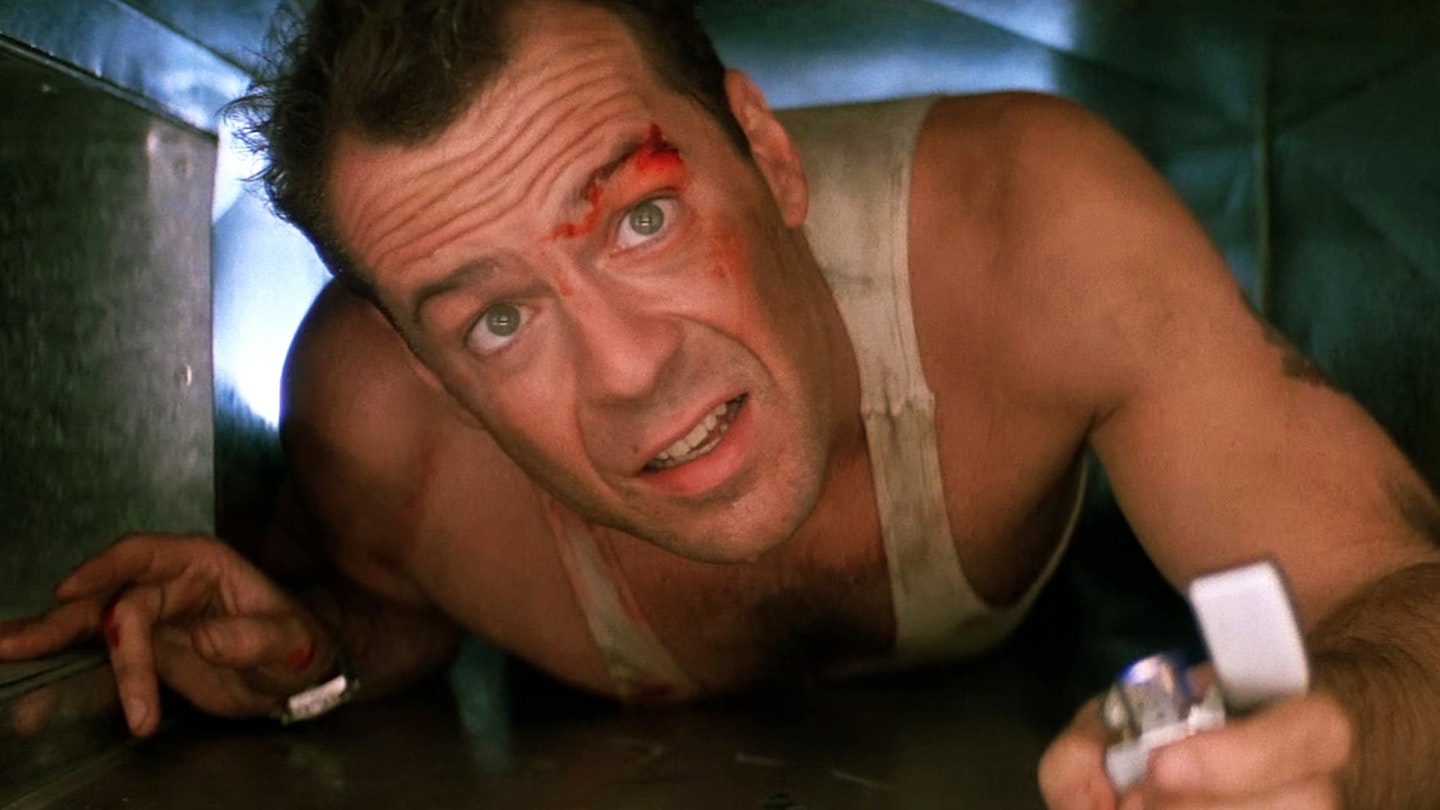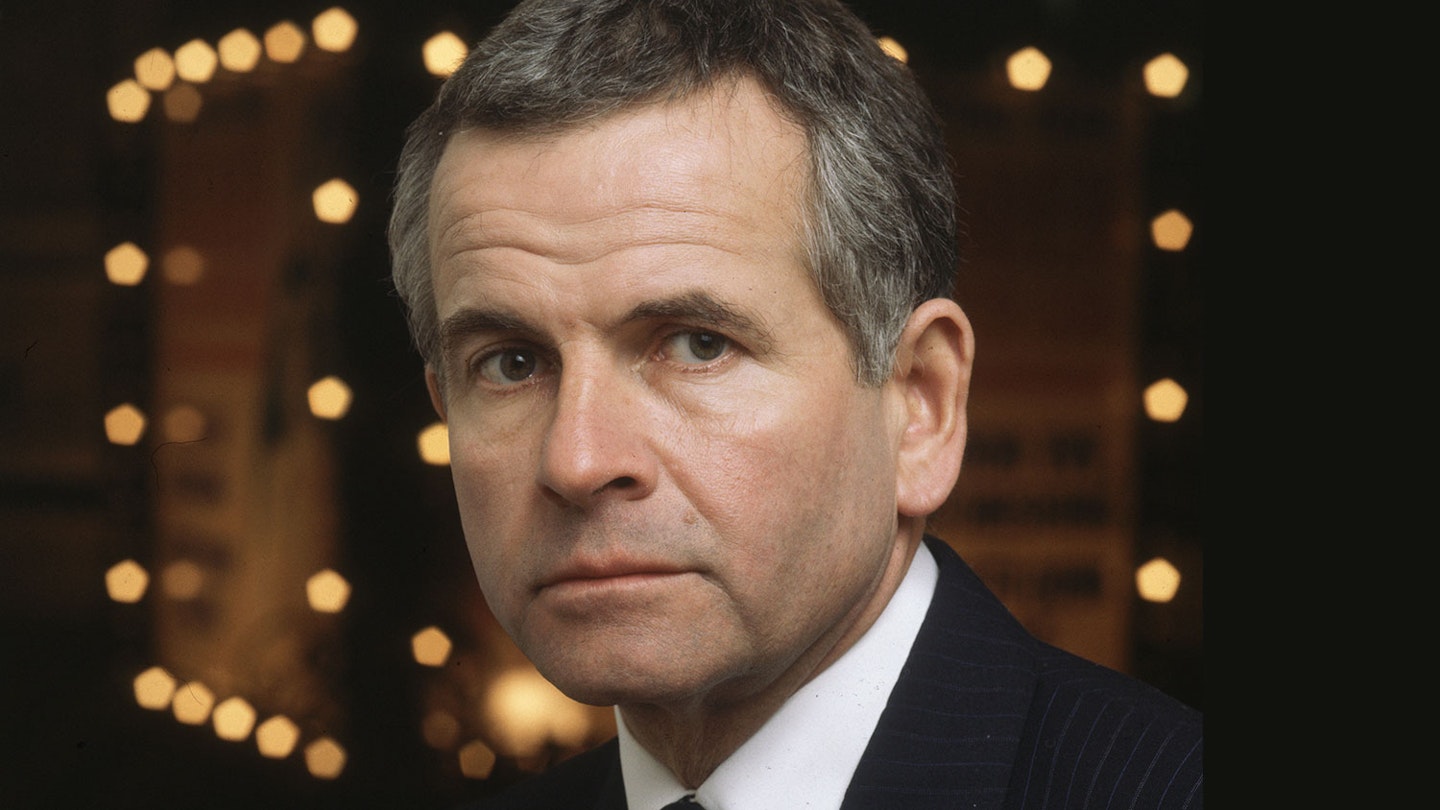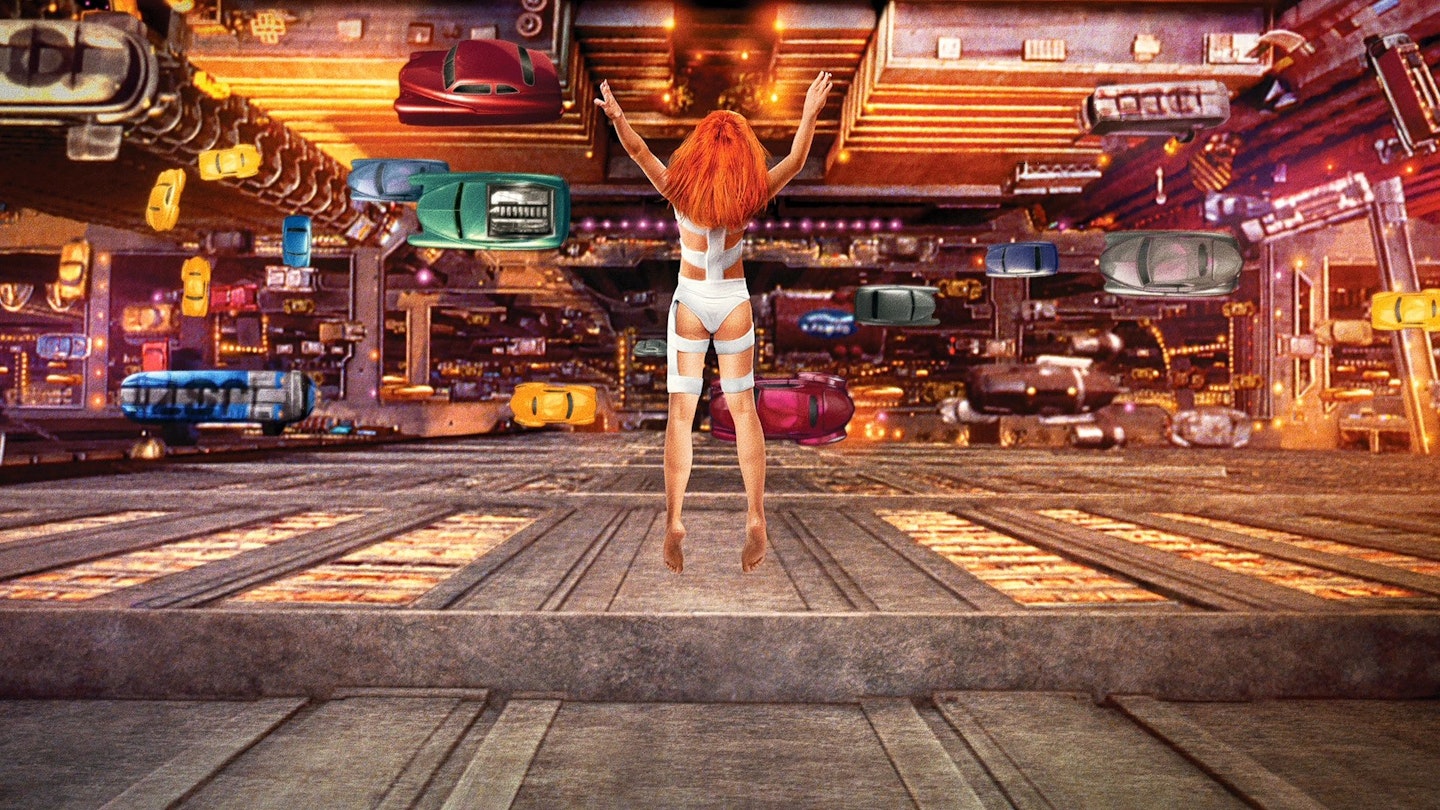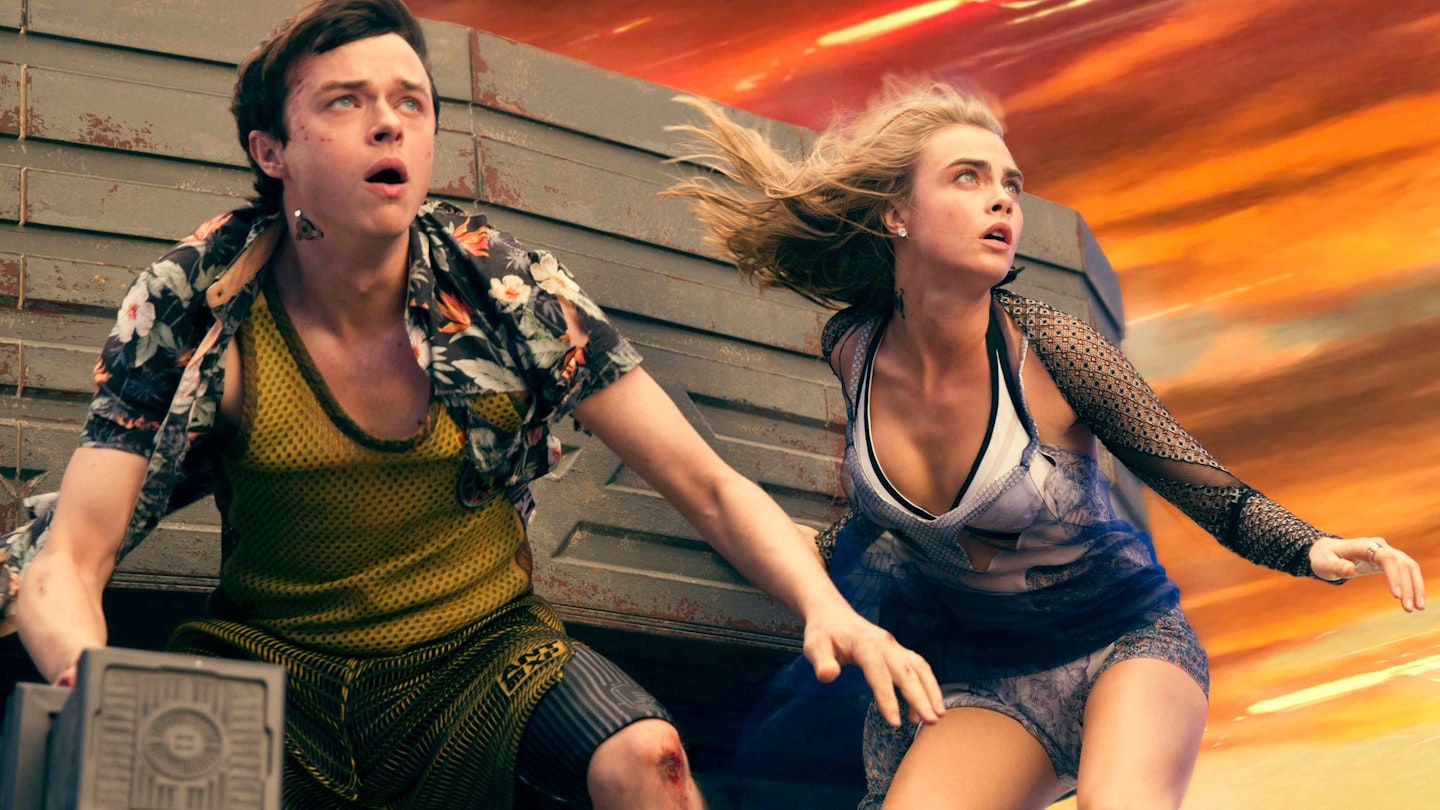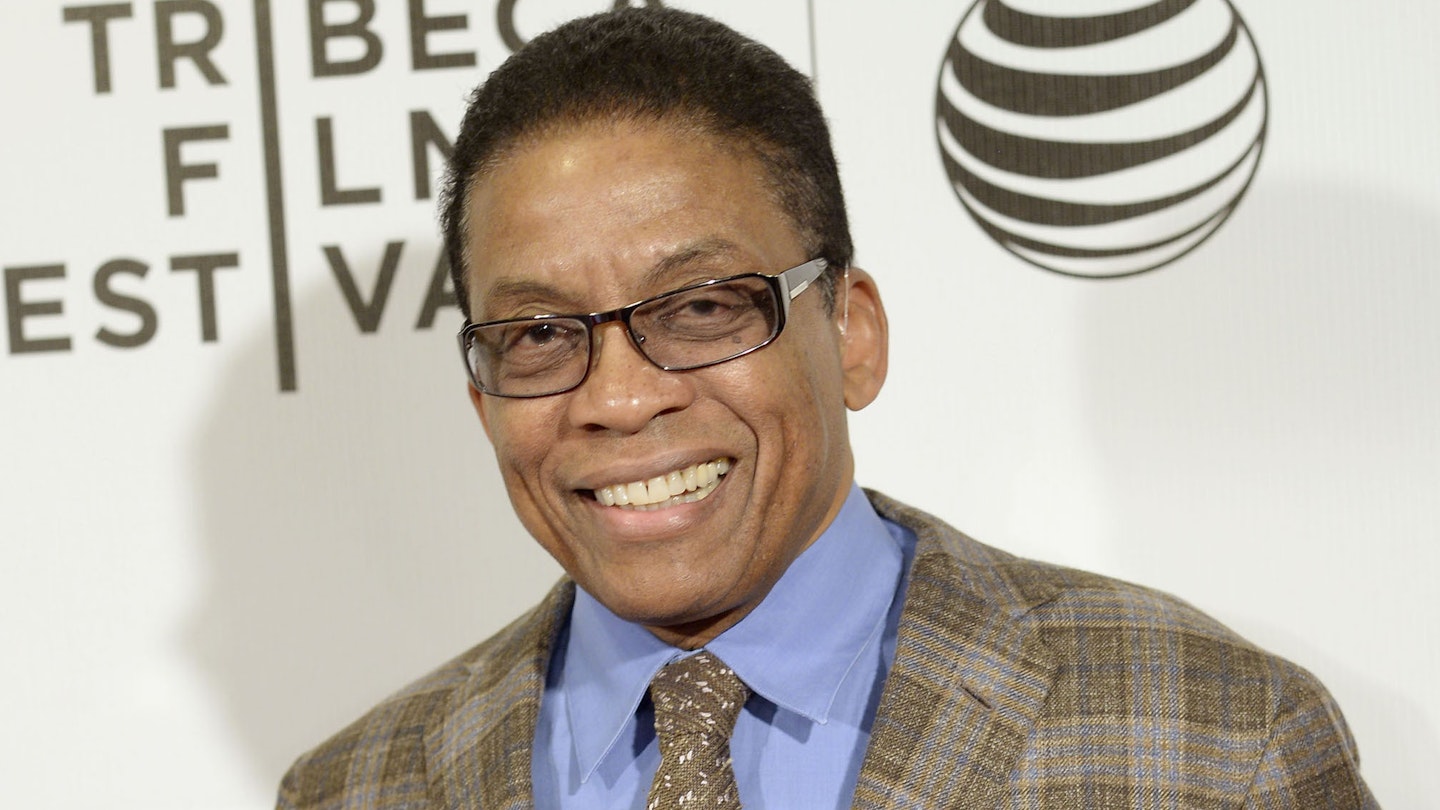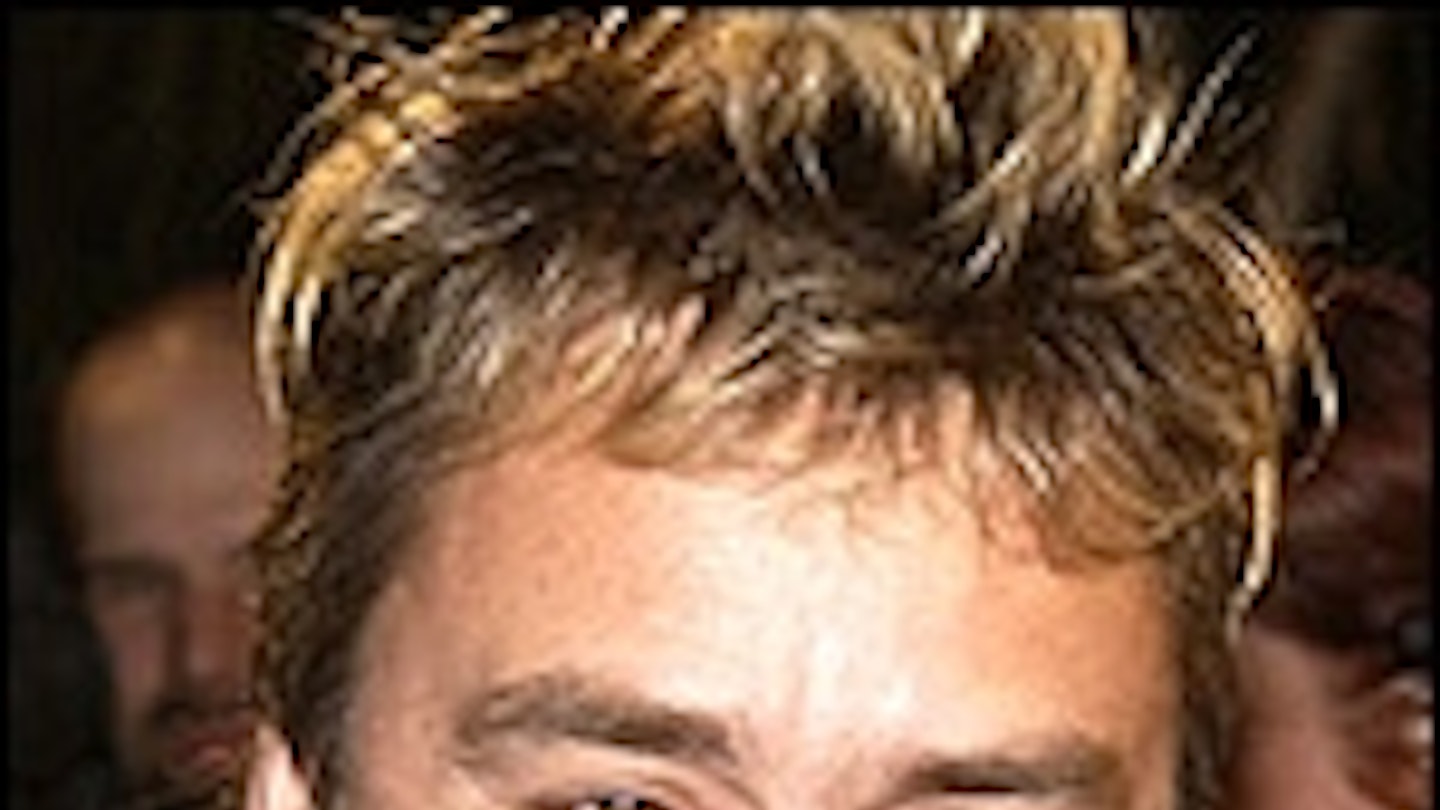Shrouded during production in the kind of secrecy more appropriate to biological warfare research, The Fifth Element bursts onto the screen in front of an audience which had not the slightest idea what to expect. The reason for the covert nature of the filming becomes obvious once The Fifth Element is seen. Because this is a film that looks unlike any you've seen before. Ever.
Director Besson jettisons the now tired Blade Runner vision of a foggy post-apocalyptic future for a bright, primary colour drenched picture of New York at high noon in the year 2259 complete with thousands of flying cars, Chinese junks floating incongruously among the melee and in one astounding shot a vista of New York after the sea level has dropped with Manhattan perched atop a sheer cliff face. Oh, and as a bonus it also contains the largest indoor explosion ever filmed (fire crews apparently took 20 minutes to extinguish the resulting blaze at Pinewood).
Storywise, we're pretty much in by-numbers sci-fi hokum territory. Earth is attacked by a force of "pure evil" defeatable only by the mysterious fifth element - the usual suspects earth, fire, water and air proving unequal to the task. The trouble is, nobody has the foggiest idea what that might be. Futuristic cabby Korben Dallas (Willis) gets entangled in the mythical brouhaha when sexy clone Leeloo (a scorching performance from ex-model Jovovich, previously best known for, um, Return To The Blue Lagoon) crashes through the roof of his taxi and they rope in priest Cornelius (Ian Holm) to try and save the planet.
Occupying the Mingish bad-guy role is a loopily nasty Gary Oldman who gleefully manifests the gamut of bad guy tics from a limp to a pronounced though frankly inexplicable South Georgia accent. The rip-offs are masterfully chosen though, from the atmospheric prologue in 1930s Egypt (always a good companion to sci-fi, though wasted in the recent Stargate) to the Chris Foss (omnipresent 80s sci-fi paperback cover artist) style impossibly massive and impossibly gleaming spaceships. The eclecticism continues through the casting choices with the incongruous likes of Lee Evans, bedecked in a Jean-Paul Gaultier sailor suit, to Tricky and American camp comic Chris Tucker who minces about the place as the universe's most irritating DJ - a sort of interstellar Chris Evans.
Willis returns from his forays into more demanding performances (12 Monkeys) to deliver the familiar wise-cracking everyman complete with Die Hard-style ripped clothing and frantic gunplay sequences (although you've not seen a ripped shirt until you've seen a ripped shirt by Gaultier), while Jovovich is a revelation. But the strength of this film is in its visuals. Just as Blade Runner changed the way the future looked for a decade-and-a-half of sci-fi filmmakers, so The Fifth Element threatens to do the same. Besson and a team of designers including Jean "Moebius" Giraud and Gaultier have pilfered everything from comic-strip art to the clunky colourful style of the Japanese video game to create an utterly unique visual experience.
If this suffers from any fault it's a case of conceptual overload, with Besson almost losing control of the whole shebang in the third act, laying on the comedy a little too heavily and losing grip of what there is of a story. But with a movie that looks this good, when the plot does go off a little kilter just relax and take in the view.
